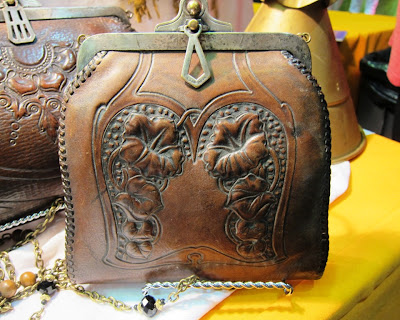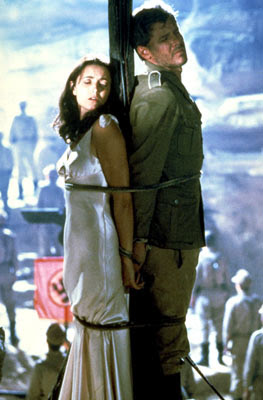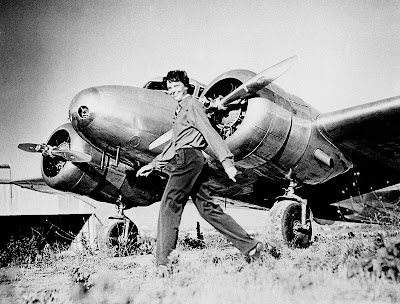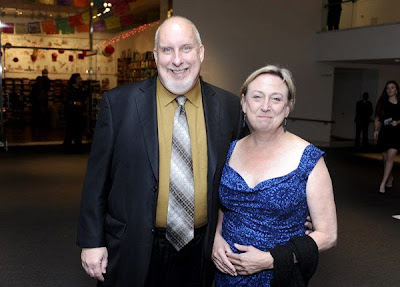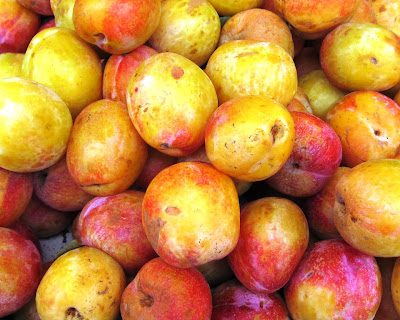 |
| Bread-and-butter pickles, ketchup, plum jam and sweet pickled pepper relish |
My mother was raised on a farm in Central Texas, and I'm pretty sure her family home-canned vegetables and preserves. But in our home, in suburbs of the Midwest, Ohio, and New Jersey, we bought our canned and bottled goods at the supermarket. I never even thought about home-canning.
My first knowledge of home canning came - oddly enough - from reading Shirley Jackson's unsettling and eerie novel
"We Have Always Lived in the Castle." Merricat, the narrator, describes the pretty colors of the jars of jams, jellies, preserves and pickles in the cellar:
There were jars of jam made by great-grandmothers, with labels in thin pale writing, almost unreadable by now, and pickles made by great-aunts and vegetables put up by our grandmothers, and even our mother had left behind her six jars of apple jelly. Constance had worked all her life at adding to the food in the cellar, and her rows and rows of jars were easily the handsomest and shone among the others....All the Blackwood women had taken the food that came from the ground and preserved it, and the deeply colored rows of jellies and pickles and bottled vegetables and fruit, maroon and amber and dark rich green, stood side by side in our cellar and would stand there forever....
In 1979 I moved from Manhattan to Seattle. I felt like I was striking out into the wild - although then, as now, Seattle was quite a cosmopolitan city. Western Washington is an incredibly rich and fertile place, where fruit, flowers and vegetables grew with abandon. The man I moved in with was an amateur winemaker and home-brewer, and his ex-wife had canned. With those expectations, I fell into "pioneer woman" mode. We drove out into the mountains and picked wild blackberries, for wine and for jam. We drove to the Skagit Valley to U-Pick farms. We bought flats of cucumbers at the market for pickles. It was my first introduction to home-made ketchup - one of the main reasons I still
can.
Later, married to
[The Man I Love], and living in Seattle's Central District, I enlisted a friend to help me make wine from the Italian prune-plums that grew in our yard, and I also made preserves.
Moving to Topanga, I met my friend Jill. She's a formidable canner. Her neighbor, a movie producer, had a lot of fruit trees on his land, and he granted her permission to forage at will. We sent our children out in little red wagons to gather the fruit, and then, in her big beautiful kitchen, we canned jars and jars of plums and apricots. My own plum tree yielded a few jars each summer - as long as I beat the birds to the fruit. I sometimes see fruits on the prickly-pear cacti in our neighborhood, and wonder whether it would be worth trying to make jam from them.
 |
| Jam cooking down |
When I was in high school - I don't remember exactly when - I had an apocalyptic dream where my friends and I were the only people left on a devastated Earth, and we settled in a farmhouse that I recognized from my bike-riding in the valleys of the Little Miami River in the suburbs north of Cincinnati where I lived. The dream was fleeting, and soon faded. But I was fascinated with the idea of having to go back to the land to feed ourselves, and preserve food for the coming year.
So although I live in one of the world's most cosmopolitan cities, when the year turns to autumn, I get the urge to put food by.
I still have my big enameled steel canning kettle, with the hinged rack. But these days I work with smaller quantities, and use my pasta-cooker to process the 3 or 4 jars a small quantity of produce yields. The colander insert works fine if you're canning half-pint jars - which hold the right quantity for a small household like ours.
I don't can tomatoes, because I find commercially canned tomatoes are perfectly fine, but if I grew tomatoes I'd can them to preserve the harvest.
Pickles and jams are the easiest and safest preserves for a home canner to make. Acid fruits, and the use of vinegar almost assure safety if you follow correct procedures and sterilize as instructed. This month so far I've made jam with purple plums and with golden pluots; I've made spicy tomato ketchup, sweet pickled peppers, and bread-and-butter pickles, all processed in a hot water bath. I've made smaller quantities of pickled red onions and pickled beets that I knew we'd eat up quickly, so I didn't bother to process them but just refrigerated them.
 |
| Bread and butter pickles |
Next month when the lemons on our trees ripen, I'm going to make Moroccan preserved lemons and some lemon marmalade.
Do you "put food by"? Do you have family memories of canning and preserving? What does the coming of autumn stir inside you?




